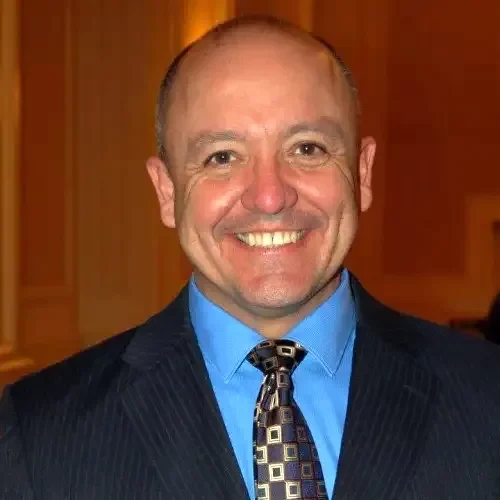Goals, Questions, and Results

Goals, Questions, and Results
Don’t Get Lost in ALL the Details of Your Vision
Setting goals for a team, organization, or yourself requires a number of questions to be asked. The questions need to be answered as honestly as possible by everyone involved in the process. Honesty is key while trying to be objective about our personal hidden agenda or the hidden agenda of others. Seek out those who will be honest and critical, in an evaluative sense, about the questions being asked and equally important, the answers being offered.
The process of identifying a path toward accomplishing a goal can be detail ridden. Many can become lost in the details of achieving a goal and may never start. Do not get lost in the process. Move forward with where you want to go and start moving in that direction.

I can relate this to some of the adventures I’ve had over my lifetime. The most recent was walking across Spain on the Camino de Santiago. I’ve wanted to go since the early nineties, but never had the opportunity due to family obligations. But in August of 2016, the 500-mile hike across Spain was underway with my girlfriend who was equally adventurous.
My preparation primarily involved having the right equipment for the trip and a plane ticket to Paris. Once at the starting point of the Camino, St. Jean Pied de Port in France, we were provided with a topography map and a list of bunkhouses to stay at along the path. Along with the yellow arrows and scallop shells marking the Camino path, we made it to Santiago de Compostela some 500-miles later. There were many changes in plans along the way, but I did not focus too much on them. We just keep moving forward. Surround yourself with people who will be there to offer support and continue to move you in the right direction. The trip is analogous to setting goals and finding your way to them. Ask the following questions when beginning the process of achieving a goal.
What is the goal to be accomplished?
There are several questions in this process or path that are very simple. The goal can be personal or it can be professional in nature. A personal goal may be having a million dollars in liquid assets. A professional goal may be having your team conduct five million dollars in new sales. Each of these goals have a numerical benchmark which makes it easy to identify. The path to accomplishing the goal is the same as any other goal, however, not all goals are as easily defined.
Other goals may include being a better person, spending more time with family, having a high functioning team, or developing your employees. While these are noble endeavors, they may not be easily quantifiable. The following questions will aid in identifying the path and process for achieving the intended goal. Use them more than once and consider them the basis for additional questions relating to your goal.
Why is the goal needed?
The “why” is of particular importance. Achieving goals may create a need for change personally or professionally. With change comes resistance and the status quo is comfortable. The why must be significant enough to enable everyone involved to push forward during the difficult times of the process. Difficulties will surface, and they need to be addressed.
Spend time identifying why a goal is needed. Ask some of the following questions as they relate to goal setting:
- What is the impact if the goal is not pursued?
- When is the appropriate time to pursue this goal?
- Will others support the position that the goal is needed?
- What is the intent of the goal?
Evaluating why a goal is needed should be undertaken from a variety of viewpoints. Individually, we may have a strong belief in the need to accomplish a goal, but having others evaluate it too can provide much needed input to potentially narrow the scope of the goal set upon.
The “why” of the goal should be the foundation. All actions, planning, resource allocation, etc. will be built upon it. The greater the need for change, the larger the foundation.

Who needs to be sought out to get help along the way?
Determine who can help in this process of change. The ability to identify key people who can help aid in the change process is key. Put ego aside and seek out those who will provide an honest and critical assessment of what is being considered. Seeking out those who will only agree with the proposed plan of action can lead to confirmation bias or worse, not identifying some fatal flaws in the process. Choose wisely.
Has this process been attempted before?
This is closely related to the previous question. Seek out those who attempted the change or a similar one previously. The experience about what went well and what to avoid can be invaluable. Identical mistakes can be made if a previous process is not identified. The success and failures of previous attempts can set a different path to be followed to avoid similar mistakes.
How can I be certain that the process is a valid one?
Validating a proposed process is not always a possibility. But more than likely, the proposed change has been attempted by your organization or an industry which has similar dynamics. Do not be constrained by your particular field when trying to validate your change process. Look to other fields.
I routinely look for solutions or validation of a process outside of my field of law enforcement. Industries such as nursing, fire services, and mail delivery, to name a few, can be researched to find information about a proposed change process. While our industries may differ in the type of service delivered, the commonality is people. There are shared traits and characteristics within our organizations. Seek them out.

Who will benefit or be harmed by the process?
An honest assessment is needed for this question. The benefits from a proposed change can benefit some while impacting others negatively. Consider the following:
- Is the proposed change for the benefit of the team?
- Is the proposed change for the benefit of the organization?
- Is the proposed change the genuinely right course of action to embrace?
- Is the proposed change being initiated to benefit me?
- Is the benefit to incur a positive view from supervisors at the negative expense of subordinates?
- Is the benefit to provide a better working environment which makes the responsibilities of supervising easier?
- For those who are impacted negatively, is the negative impact to benefit the team or organization the right course of action to be taken?
- Is the change being sought punitive?
Each of the questions will provide the basis for an honest analysis of the benefits or negative impacts of the proposed change. Use it as a compass towards a genuine assessment. It may lead to more questions.
How can the path towards the goal be modified along the way?
The irony of proposing change sometimes lies in the inability to change course during the implementation of the change process. Having contingency plans to react to a new environment during the change process could be equally as important as the original need for change. The working landscape may vary from the one that was originally expected. Have a plan to make adjustments along the way.
What are the intermediate goals during the process?
Determine what goals or benchmarks will be achieved during the change process. Intermediate goals are necessary for those who have proposed the change, but it is also needed for those who have an overview of it. If there are difficulties of achieving the final goal, intermediate goals provide assurances to managers who may not be wholly supportive of the change. Intermediate goals provide an insurance of sorts to demonstrate that the change is taking place within a viable process. There should be small victories along the path toward change.
What determines that the goal has been accomplished?
Determining benchmarks for completing the change process can range from simple to complex. Be detailed in describing how a goal has been achieved.
These questions are a concise template of what should be asked prior to implementing change. Not asking the needed questions can lead change into the wrong or unneeded direction. Our responsibilities as managers is to ask these questions prior to impacting the organization.
Survey the various parts of your life; both professionally and personally. We all have aspects in each which need improvement or outright change. Change one aspect of your life using these strategies. Start small and work toward the more complex issues. You will lead yourself in a satisfying direction to the benefit of those around you. Start today.

Al Cobos
Al Cobos is the owner and lead consultant for Dychelon which improves team performance and promotes successful team building. Al has successfully built teams over the past two decades. He has over thirty years of public sector experience in addition to teaching for several universities. His focus is to improve people in their personal and professional lives.